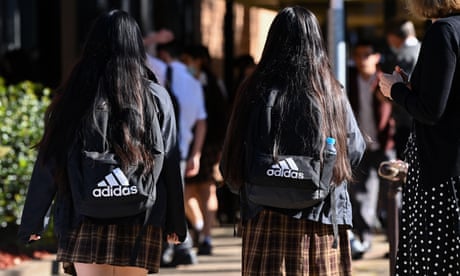- by foxnews
- 08 Apr 2025
Underestimated: why young women are shying away from economics
Underestimated: why young women are shying away from economics
- by theguardian
- 16 Apr 2022
- in news

Among the 40 federal treasurers Australia has had since 1901, there is an outstanding similarity: not one is a woman. About the same can be said for the leadership of other top economic bodies; the Productivity Commission, Asic, and Apra have never been led by women. Nor, in its 60 years, has a woman ever been governor of the Reserve Bank.
These positions that impact the economy of the country, and the lives of its 25 million citizens, have never been filled by a female.
The pipeline to these positions of power, and to top business and government boardrooms across the country, often involves the study of economics. But while there has been a push in recent years to get women studying in traditionally male-dominated Stem fields, the proportion of women studying economics has been in decline.
New data and analysis from the Reserve Bank of Australia may have identified one of the roadblocks; female high school students believe they are worse at economics than they actually are.
The RBA study asked 2,000 year 11 and 12 students across Australia to rank their understanding of economics on a scale of one to five. This found their self-perceived proficiency, which was tested against their real proficiency based on performance in a test of economic concepts.
Compared to almost half of male students surveyed, only 30% of female students reported a good understanding of concepts. Meanwhile, 35% of girls said they had only a poor understanding of concepts but only 20% of boys did the same.
Over the course of a generation, high school enrolment in economics has fallen by 70%. That fall has been most pronounced among female students, with RBA data suggesting a 78% decline in girls enrolling since 1992.
There are now two boys to each girl studying economics at a school level in Australia. And at university, male students are again more likely to enrol, with numbers of female enrolments dwindling over recent decades. Today, women make up only 37% of economics students.
But their high school study of economics set those goals askew.
In the US, an analysis of economic textbooks found that women were generally referenced in roles such as shopping or doing household chores, while men were overrepresented in positions of authority. Across her own teaching, Risse has observed the same in Australia.
Then there is superannuation. The current average payout for women is a third of the payout for men, quantified by the Australian Human Rights Commission as just $37,000 compared with $110,000.
The RBA survey also found female students are typically more interested in identifying problems to be solved, and in issues like globalisation and the environment, whereas male students tend to be more interested in topics such as the share market and production decisions.
- by foxnews
- descember 09, 2016
Ancient settlement reveals remains of 1,800-year-old dog, baffling experts: 'Preserved quite well'
Archaeologists have recently unearthed the remarkably well-preserved remains of a dog from ancient Rome, shedding light on the widespread practice of ritual sacrifice in antiquity.
read more


